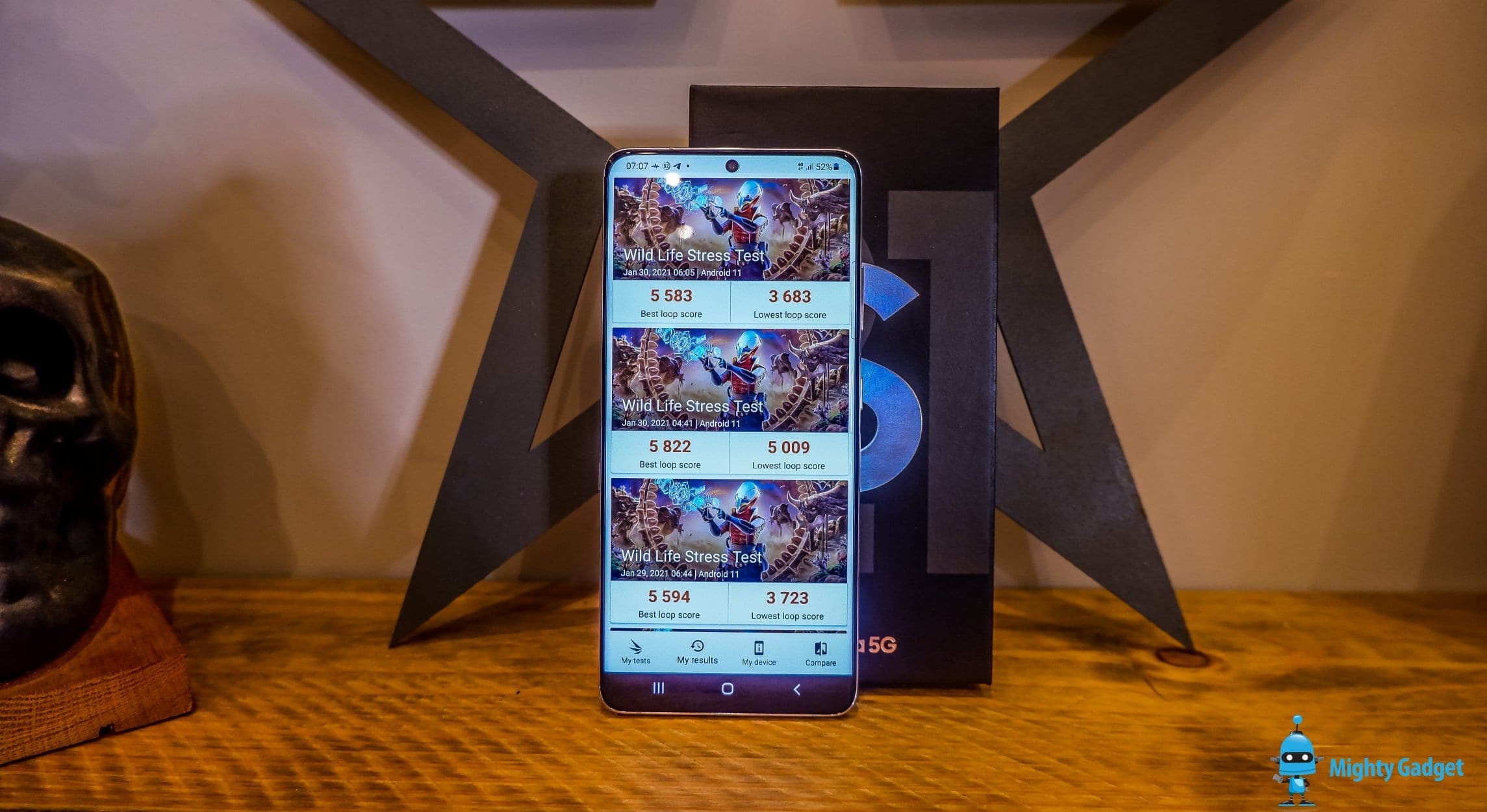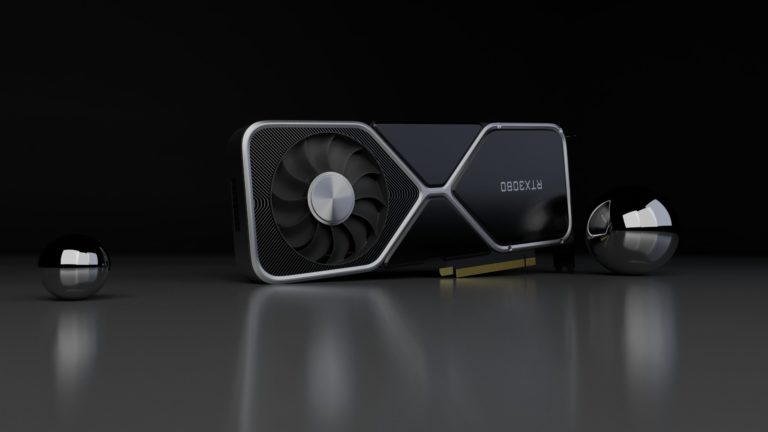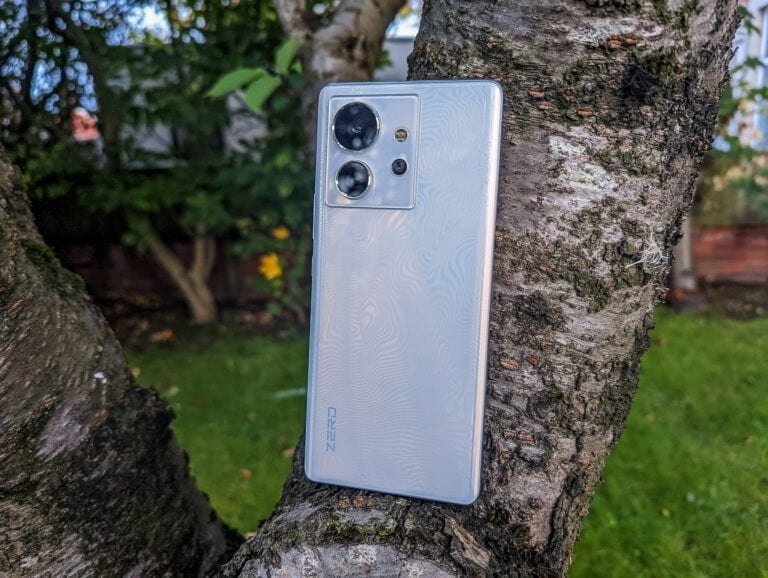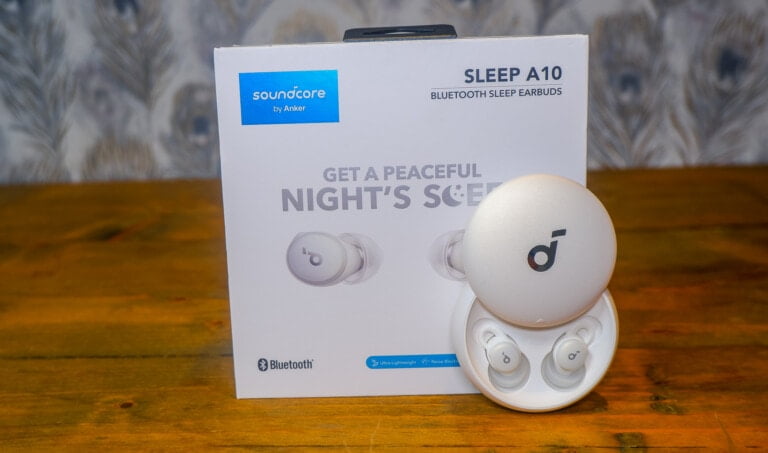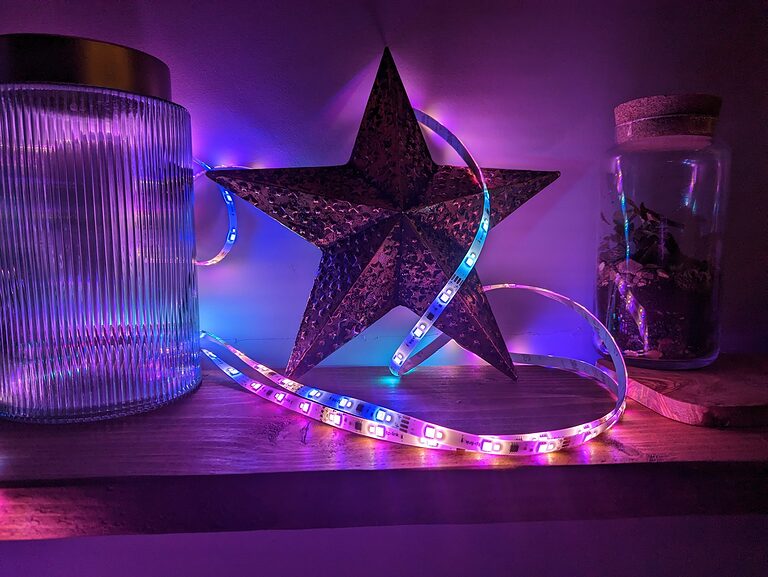Any links to online stores should be assumed to be affiliates. The company or PR agency provides all or most review samples. They have no control over my content, and I provide my honest opinion.
As part of my Xiaomi Mi 11 review, I dedicated a post to testing the battery and seeing how much temperatures rise while in use.
The phone runs much hotter with quicker battery drain than last years flagship Snapdragon 865 phones, but it does offer incredible performance.
As usual, the UK variant of Samsung flagship Galaxy S21 series uses their latest and greatest Exynos 2100 chipset, while US buyers get the Snapdragon 888.
In recent years the Exynos devices have coped some flak for poor battery performance compared to the Snapdragon counterpart. This year the Exynos the looks like it should be back on form with Samsung ditching their custom CPU cores, adopting an all ARM design, and using the same fabrication process as Qualcomm.
By all accounts, it should easily trade blows with the Xiaomi Mi 11, but in my performance comparison with the Snapdragon 888, this was not quite the case. Benchmarks such as Antutu, Geekbench and 3DMark all had the Exynos 2100 scoring lower.
They were still all excellent scores, so not a significant problem for me, but stress testing in 3D Mark Wild Life did raise some serious concerns.
I will be the first to admit that my testing is not the most thorough, relying on one benchmark for this post, but it does raise some concerns.
Antutu Benchmark
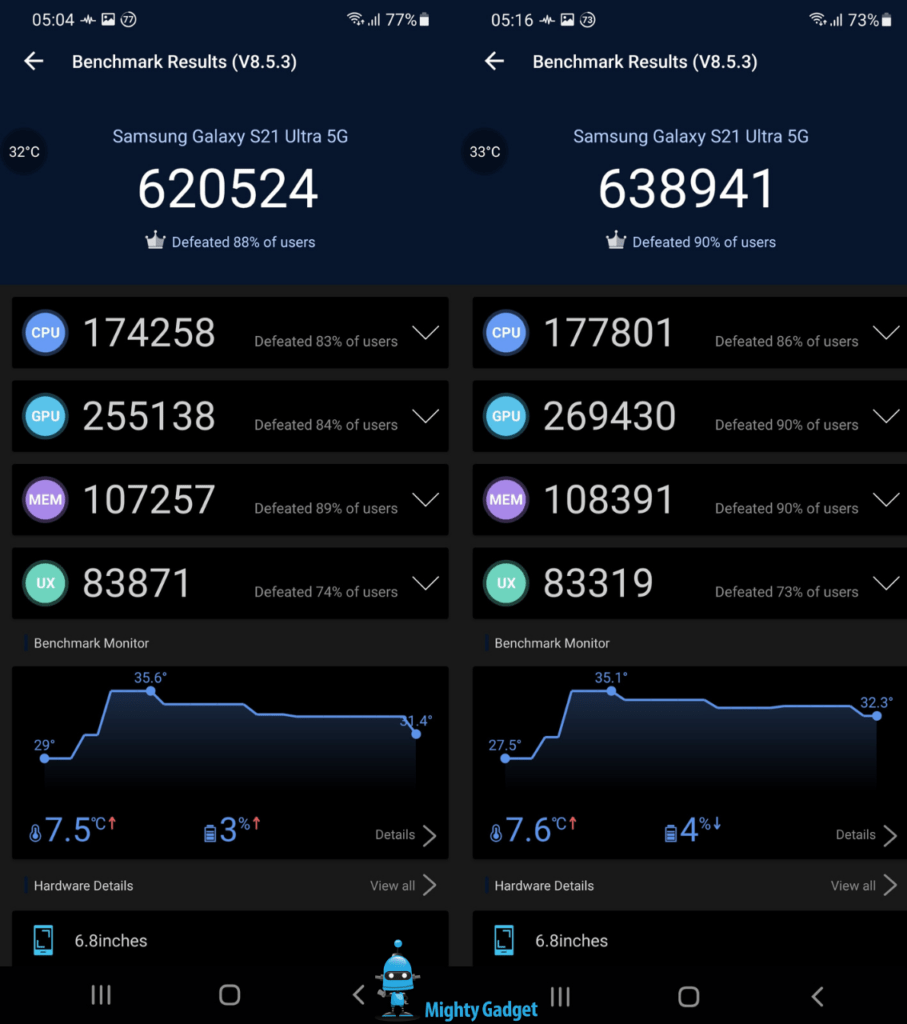
While the Samsung Galaxy S21 Ultra scored lower than the Xiaomi Mi 11 the temperature didn’t rise quite as much, and the battery did, though the Ultra battery is quite a bit larger.
Wild Life Stress Test vs Snapdragon 888 on Xiaomi at different resolutions
The 3DMark Wild Life stress test is where things start to go a little wonky. The Xiaomi Mi 11 saw big rises in temperatures and as a result, the score it managed to achieve dropped slightly the more it ran. With a stability score of over 90% on its worst run, it still managed to outperform any device from last year, but the result was not ideal.
Unfortunately, the Samsung Galaxy S21 Ultra has much more worrying results.
WQHD+ (3200×1440) and 120Hz
If you have spent over a grand on a phone, you probably want to run it at the full resolution and refresh rate. It is brilliant, beautiful and responsive in day to day use, but the Wild Life stress test paints a different picture.
The initial result is high, not quite as high as the SD888, but it hammers lasts years flagship phones. Sadly, the stability at this resolution is 62.3% meaning the best loop score of 5466 drops down to 3404 for its worst loop.
The Snapdragon 865 on the Realme X50 Pro achieved a best and worst of 3867 and 3855, so towards the end of the test, a phone a year older than the S21 is scoring higher.
In this test the Xiaomi Mi 11 managed between 5550 and 5045 across the test for a stability of 90.9%
For the temperatures, the Samsung rose 18°C from 25°C to 43°C while the Xiaomi moved 22°C from 24°C to 46°C – this may give a clue to why the Samsung throttles more.
The Samsung’s (larger) battery dropped 12% points from 78% to 66%, but the Xiaomi dropped 15% point drop from 83% to 68%. Once you factor in the battery size difference, I would expect these numbers are similar.
FHD+ (2400×1080) and 60Hz
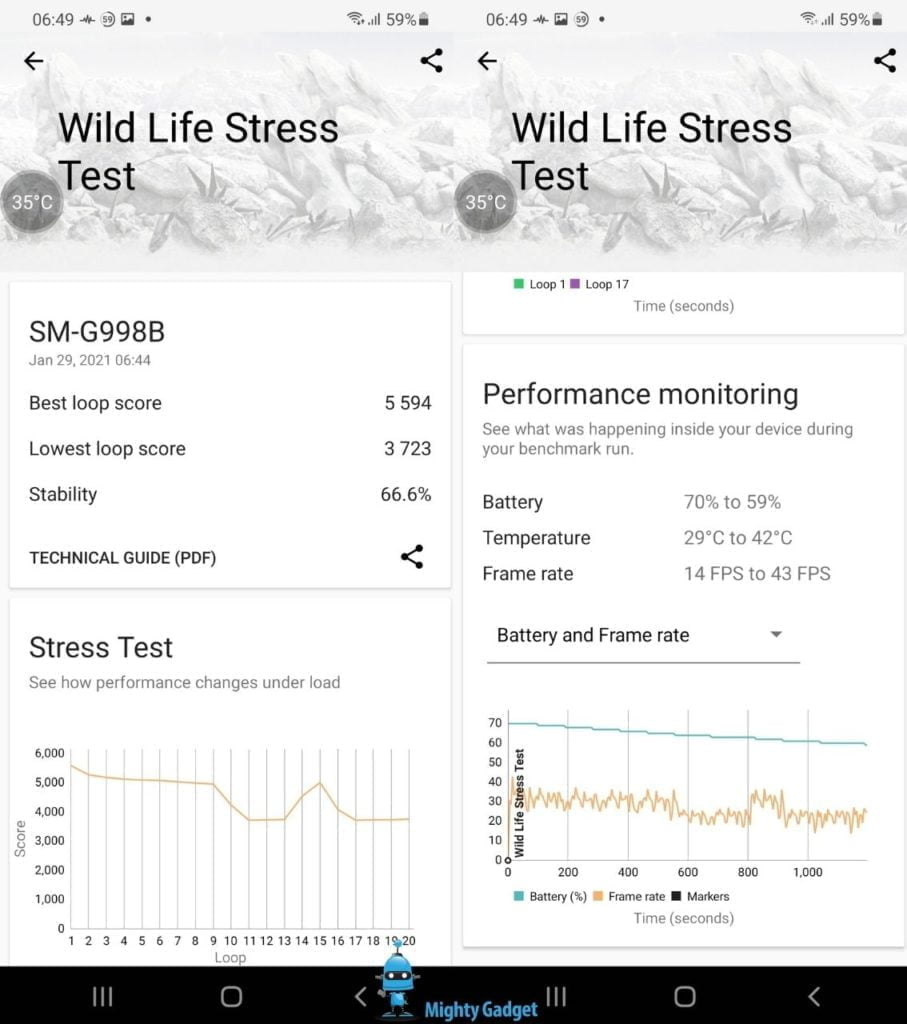
Dropping down to a lower resolution, things improve marginally, with a stability of 66.6% and the score going from 5594 to 3723.
In this test the Xiaomi Mi 11 managed between 5586 and 5090 across the test for a stability of 91.1%
The Samsung increased 13°C from 29°C to 42°C while the Xiaomi increased a massive 20°C from 25°C to 45°C.
The Samsung battery dropped 11% points while the Xiaomi battery dropped 14% points.
HD+ (1600 x720) @ 60Hz
Dropping the resolution down to 1600 x720 @ 60Hz, the same resolution you have on the £169 Realme 6i, things were still bad.
I ended up doing this test more than once, the first test was when I fist got into my office in the morning where the room temperature was about 15°C, and the phone had not been used all night. The skewed the result from normal usage with a starting temperature of 23°C allowing the phone to take longer to reach its peak temperature of 42°C and a stability of 86%
That’s still a poor stability but it means the top score of 5822 and bottom score of 5009 is higher than you will find on flagship phones of last year.
Retesting after some usage and when the room had warmed up to a still cold 17°C, the phone suffered the same problems again. A stability of 66% with the low score dropping to 3683.
In this test, the temperature increased 15°C from 27°C to 42°C with a battery change of 12% points.
Xiaomi doesn’t have an option to run the phone at this resolution.
PCMark 2.0 Battery Test
The Xiaomi Mi 11 didn’t post the best battery test mark, it wasn’t awful, but certainly a step back from the way phones have been moving with battery performance.
The Samsung achieve a much better result at 12 hours 46 minutes.
PCMark is supposed to replicate real-world usage, and in my experience, phones running this test often score different than you would expect. This seems to be the way the manufacturer treats different workloads.
With the Xiaomi that achieved a score of 13098 over the course of testing, but the Samsung reduces its score a little to 11738.
Overall
I have only had the Samsung Galaxy S21 Ultra a couple of days, and benchmarks are not always the most accurate representation of real life.
By all accounts, it looks like the Samsung will throttle significantly at 42°C whereas the Xiaomi will push things to 45°C, so in my cold office I probably get more performance than someone living in a hot climate.
Running the overlayed on the Wild Life test indicated that the CPU temperature on the Samsung never went above 40°C until and the battery temperature hit about 38°C until about halfway through the test. From loops 12 onwards (maybe before) the temps hit 41-43°C with the battery creeping up to 41°C.
Looking at the graphs and each loop score, the phone gradually drops in score until you hit loop 13 (so 13 minutes of gaming) when the score drops 11% and then remains consistent at around 3700
During my limited time with the Samsung, I don’t feel like I have experienced any of the issues mentioned here, and I felt the same about the Xiaomi.
I have not gamed much on the phone yet, and certainly not paid much attention to the exact temperature or performance. So over the next few days, I will try and get a better idea if these benchmarks match real-life usage.
Further Reading
- Xiaomi Mi 11 Review: Testing thermals and battery drain of the Snapdragon 888 vs SD865 and Kirin 980
- Samsung Exynos 2100 vs Qualcomm Snapdragon 888 Performance & Benchmarks Compared
- Xiaomi Mi 11 Review
- Snapdragon 888 vs Snapdragon 865 vs Dimensity 1000+ Performance & Benchmarks Compared
I am James, a UK-based tech enthusiast and the Editor and Owner of Mighty Gadget, which I’ve proudly run since 2007. Passionate about all things technology, my expertise spans from computers and networking to mobile, wearables, and smart home devices.
As a fitness fanatic who loves running and cycling, I also have a keen interest in fitness-related technology, and I take every opportunity to cover this niche on my blog. My diverse interests allow me to bring a unique perspective to tech blogging, merging lifestyle, fitness, and the latest tech trends.
In my academic pursuits, I earned a BSc in Information Systems Design from UCLAN, before advancing my learning with a Master’s Degree in Computing. This advanced study also included Cisco CCNA accreditation, further demonstrating my commitment to understanding and staying ahead of the technology curve.
I’m proud to share that Vuelio has consistently ranked Mighty Gadget as one of the top technology blogs in the UK. With my dedication to technology and drive to share my insights, I aim to continue providing my readers with engaging and informative content.

